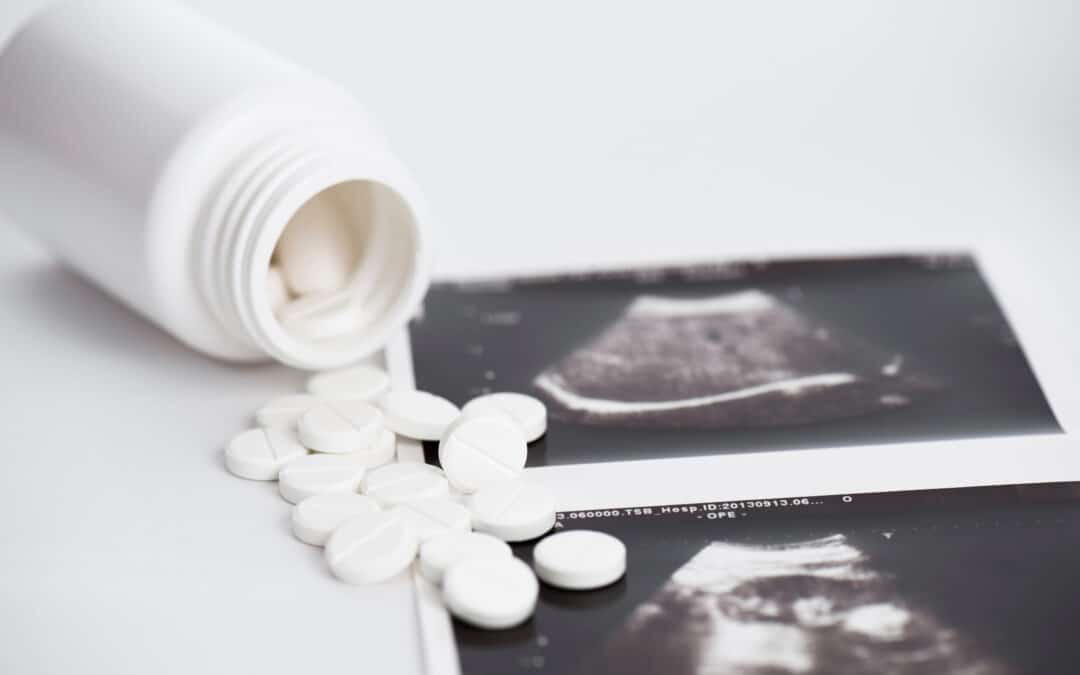What’s really at stake in the abortion pill case before the Supreme Court
by Camille Williams
This article first appeared in the Deseret News.
Contrary to media hype and fundraising clickbait, the abortion pills case before the Supreme Court cannot result in the banning of chemical abortion. In fact, if the questions during the oral argument forecast the decision, the high court is more likely to reverse the 5th Circuit’s order which would have temporarily reinstated pre-2016 safe-use protocols for abortion pills. A reversal will leave in place the FDA’s 2016 and 2021 “safe-use” changes allowing self-managed chemical abortion with emergency room back-up.
Here’s a look at what’s really at stake in the case of Food and Drug Administration v. Alliance for Hippocratic Medicine, argued March 26 before the Supreme Court.
What are the facts of this case?
The facts in the case are complex enough that the 5th Circuit Court made a chart of dates and events related to the FDA’s changes to required safeguards for abortion drug use. In short, in 2000 the FDA labeled pregnancy a serious and life-threatening illness and approved the abortion drugs with numerous risk evaluation and mitigation strategies, or REMS. In 2016, the FDA changed four of the REMS by: 1) increasing the maximum gestational age from 49 to 70 days; 2) reducing in-person visits from three to one; 3) allowing non-physicians to prescribe and dispense the drugs; and 4) eliminating reporting of nonfatal adverse events. In 2021, the FDA allowed abortion drugs to be mailed and eliminated the in-person dispensing requirement to screen for tubal pregnancies and other dangerous medical conditions.
In chemical abortion, generally two drugs are used. The first taken is mifepristone, which blocks hormonal support, usually killing the fetus. That drug is followed 24-48 hours later by misoprostol, which causes uterine contractions that will expel the unborn child and pregnancy tissues. But according to the prescribing information, increased gestational age correlates with increased incomplete abortion and an up to tenfold increased need for follow-up surgical intervention for the ongoing pregnancy — from 0.3% up to 49 days gestation to 3.1% for 64-70 days.
The 5th Circuit found that “FDA and Danco do not dispute that a significant percentage of women who take mifepristone experience adverse effects.” While there are discrepancies between adverse events data reported to FDA and other published adverse events data, it’s clear from the prescribing information that access to health care and emergency services is critical for the safe use of mifepristone because abortion is incomplete in about 2-7% of patients, depending on gestational age. Additionally, about 2.6% of users will need a surgical procedure to end the pregnancy or stop the bleeding; some women suffer severe conditions, such as sepsis (.02%) or hospitalization relating to the abortion (.04% to .06%). Some women require a transfusion due to heavy bleeding (.03% to .05%).
Why did some doctors challenge the FDA’s decision to end most of the original safety requirements?
The doctors who oppose abortion argue that the FDA’s 2016 and 2021 changes removing the original risk evaluation and mitigation strategies was arbitrary, capricious and unreasonable, and makes using abortion drugs riskier for women. That lack of safeguards, they contend, resulted in increased numbers of women needing emergency care for the complications those strategies were designed to prevent.
In testimony cited in the 5th Circuit order, the doctors said they have treated an unconscious woman with “heavy bleeding” who needed a blood transfusion, women presenting with “torrential” or “extremely heavy” bleeding, and a woman so ill that her Uber driver took her directly from Planned Parenthood to the emergency room. One doctor has treated “at least a dozen cases of life-threatening complications,” another has treated at least a dozen women “suffering significant bleeding,” and a third described “near misses” where women face “potentially deadly situations.” They contend that the FDA’s elimination of nonfatal adverse events reporting distorts the safety profile of the drug, as does the absence of even one study showing that the cumulative effect of eliminating all of the safeguards is safe.
In addition, at the Supreme Court, the physicians argued that the FDA’s lifting of earlier safe-use requirements effectively conscripts them to provide emergency care coverage for abortion drug prescribers’ patients experiencing largely preventable complications. Sometimes that care violates the conscience rights of doctors who oppose abortion and at times need to complete the abortions started by mifepristone and misoprostol.
In contrast, in its brief, the FDA argued that the abortion drugs are proven safe, “serious adverse events are exceedingly rare,” and that FDA reasonably and lawfully removed safe-use requirements proven to be unnecessary. FDA further argued that neither the challengers nor the courts can rightfully “second-guess highly technical determinations that Congress has assigned to an expert agency.”
Ultimately, the court seemed most interested in the FDA’s contention that those challenging its decisions do not have “standing” — the legal right to bring this case to federal court because they suffered an actual injury fairly traceable to the FDA’s actions. While the FDA admitted that a doctor whose conscience rights were violated by having to abort a viable fetus in order to save the life of a woman who had taken abortion drugs would have standing, it argued that none of the doctors in this case had proven such injury.
If the high court agrees, it’s likely to reverse on the standing issue and not consider the challengers’ contentions that the FDA’s removal of most of the original safety requirements for chemical abortion drugs violated the Administrative Procedures Act and were unreasonable and arbitrary because they were “based on data and studies that the agency acknowledged were insufficient and inadequate.”
What are the immediate takeaways?
Apart from the obvious conclusion that complainants must meticulously prove standing, the interaction between the justices and advocates may give insight to the outcome of ongoing or future cases related to separation of powers, judicial deference and the courts’ role in evaluating scientific or technical data.
Some justices expressed concern about separation of powers, noting that the scope of the 5th Circuit’s order is part of “a rash of universal injunctions or vacaturs” from lower courts which turn a small lawsuit with a remedy limited to the specific complainants “into a nationwide legislative assembly … on an FDA rule or any other federal government [action].” That seems a signal to litigants and lower courts that remedies should be limited to specific complainants.
An additional issue in this case (and other cases heard by the court this term) is whether judges are competent to evaluate scientific or other technical information, or must refrain from “second guessing” the rules and decisions of the “career expert civil servants” running federal agencies. When the FDA argued that its actions are insulated from citizen lawsuit and judicial review, Justice Samuel Alito responded, “So your argument is that it doesn’t matter if FDA flagrantly violated the law, it didn’t do what it should have done, endangered the health of women, it’s just too bad, nobody can sue in court?”
The FDA responded that its decisions are self-correcting: “(FDA) conducts ongoing surveillance and can make adjustments to the regulatory regime if safety situations emerge.”
That “surveillance” seems both self-contradictory and illusory, since as the 5th Circuit found, the FDA’s “2016 Major REMS Changes eliminated the requirement that non-fatal adverse events must be reported to FDA. After eliminating that adverse-event reporting requirement, FDA turned around in 2021 and declared the absence of non-fatal adverse-event reports means mifepristone is ‘safe.’ … This ostrich’s-head-in-the-sand approach is deeply troubling — especially on a record that, according to (the drug maker’s) own documents, necessitates a REMS program, a ‘Patient Agreement Form,’ and a ‘Black Box’ warning. And it suggests FDA’s actions are well ‘outside the zone of reasonableness.’ It’s unreasonable for an agency to eliminate a reporting requirement for a thing and then use the resulting absence of data to support its decision.”
In fact, that “exceedingly rare” percentage of serious adverse effects cited by the FDA is not inconsequential. In 2023, there were an estimated 1,026,690 abortions within the United States’ formal health care system. Approximately 63% of those abortions occurred via abortion pills. This means, according to the prescribing information, that this FDA-approved drug regimen sends tens of thousands of women to the emergency room each year.
Still, any women harmed by abortion pills may have a remedy. In arguments before the court, the FDA stated, “The drug sponsors themselves remain responsible at all times. We have a tort system in this country, and that can help ensure that if there are safety problems that come to pass, the sponsors will take action in reaction to that.”
This invitation to tort attorneys may have them readying their advocacy on behalf of women injured by chemical abortion. However, some think they will face similar hurdles to those who took on Big Tobacco.
Much of the data the FDA relies on relative to abortion is produced and controlled by manufacturers, abortion providers and abortion advocates. Some have argued that “Big Abortion is following Big Tobacco’s powerful old playbook: ‘fund and publish research that supported the industry’s position, suppress and criticize research that did not and disseminate a favorable interpretation of data broadly to the media and policymakers.’”
Whatever the court decides, this case is unlikely to settle the ongoing dispute about the impact of chemical abortion on women. As Kellie Fiedorek, an attorney representing the physicians, opines, “Regardless of one’s views on abortion, the fact that the FDA removed the requirements not only for reporting (serious adverse events) but also for all in-person doctor visits and ongoing care for women taking these drugs should be deeply concerning.”
________________________________________________
 Camille S. Williams (J.D., M.A., Brigham Young University) UFI board member, worked as part of the Family Law Research Project at the J. Reuben Clark Law School at Brigham Young University, and has taught family law for undergraduates. Her research interests are related to women’s and family issues. Her publications have supported the sanctity of human life and the necessity of the natural family for the flourishing of individuals and societies. She currently works as an assistant city attorney. She and her husband, Richard, are the parents of five, and the grandparents of twenty-four.
Camille S. Williams (J.D., M.A., Brigham Young University) UFI board member, worked as part of the Family Law Research Project at the J. Reuben Clark Law School at Brigham Young University, and has taught family law for undergraduates. Her research interests are related to women’s and family issues. Her publications have supported the sanctity of human life and the necessity of the natural family for the flourishing of individuals and societies. She currently works as an assistant city attorney. She and her husband, Richard, are the parents of five, and the grandparents of twenty-four.

